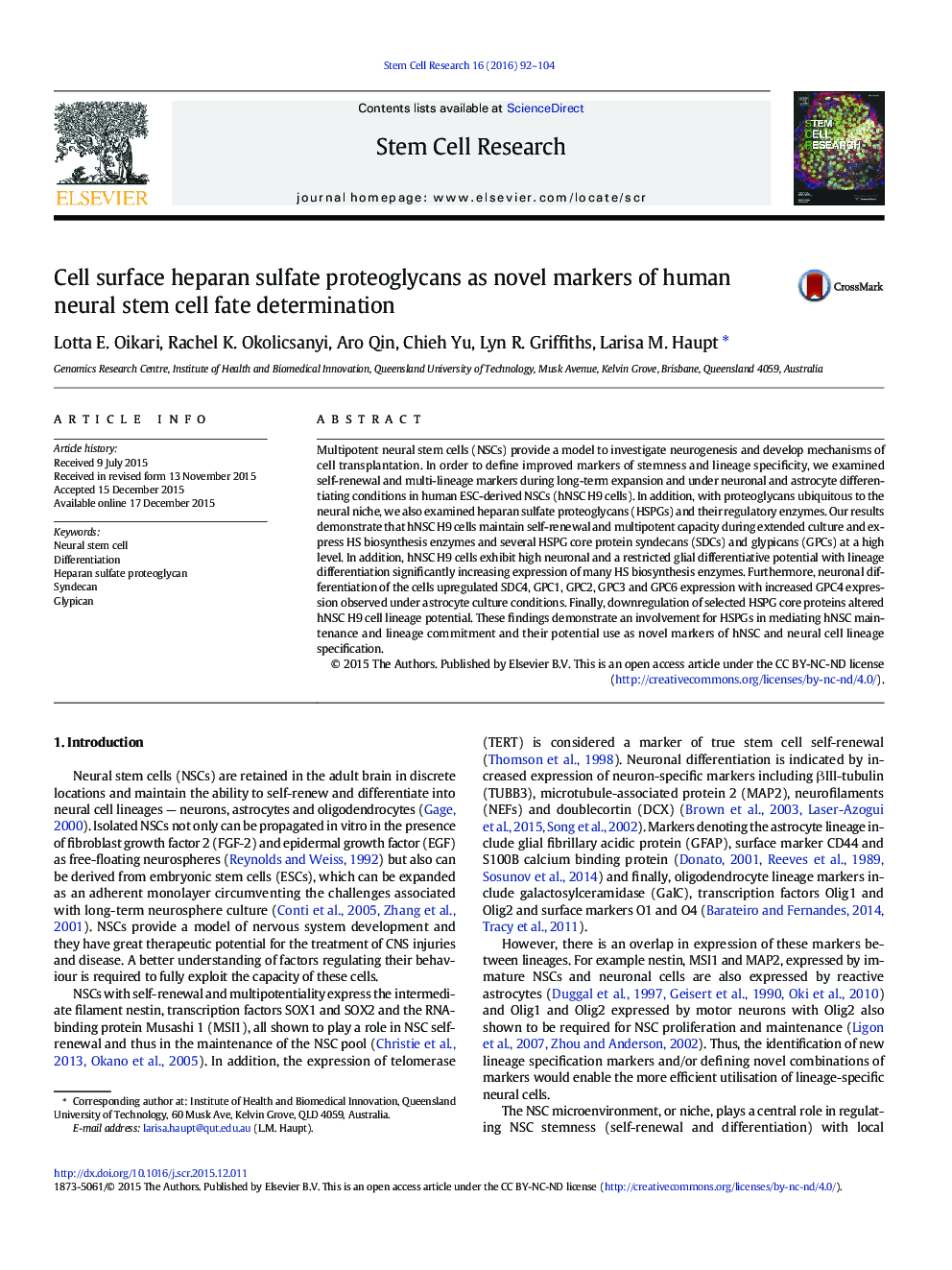| Article ID | Journal | Published Year | Pages | File Type |
|---|---|---|---|---|
| 2094298 | Stem Cell Research | 2016 | 13 Pages |
•hNSC H9 cells maintain self-renewal and multipotent capacity during long-term culture.•hNSC H9 cells express HS biosynthesis enzymes and cell surface HSPGs.•Lineage commitment alters hNSC H9 cell HSPGs profile.•Glypican 1 and 4 mediate hNSC H9 lineage differentiation potential.•Syndecans and glypicans provide novel markers of hNSCs and neural cells.
Multipotent neural stem cells (NSCs) provide a model to investigate neurogenesis and develop mechanisms of cell transplantation. In order to define improved markers of stemness and lineage specificity, we examined self-renewal and multi-lineage markers during long-term expansion and under neuronal and astrocyte differentiating conditions in human ESC-derived NSCs (hNSC H9 cells). In addition, with proteoglycans ubiquitous to the neural niche, we also examined heparan sulfate proteoglycans (HSPGs) and their regulatory enzymes. Our results demonstrate that hNSC H9 cells maintain self-renewal and multipotent capacity during extended culture and express HS biosynthesis enzymes and several HSPG core protein syndecans (SDCs) and glypicans (GPCs) at a high level. In addition, hNSC H9 cells exhibit high neuronal and a restricted glial differentiative potential with lineage differentiation significantly increasing expression of many HS biosynthesis enzymes. Furthermore, neuronal differentiation of the cells upregulated SDC4, GPC1, GPC2, GPC3 and GPC6 expression with increased GPC4 expression observed under astrocyte culture conditions. Finally, downregulation of selected HSPG core proteins altered hNSC H9 cell lineage potential. These findings demonstrate an involvement for HSPGs in mediating hNSC maintenance and lineage commitment and their potential use as novel markers of hNSC and neural cell lineage specification.
